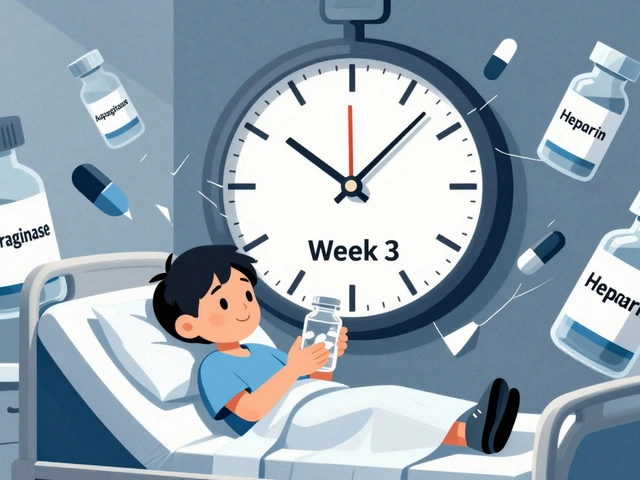Understanding Etodolac: A Brief Overview
Before jumping into the specifics, it's essential to understand what Etodolac is. Etodolac is a nonsteroidal anti-inflammatory drug (NSAID) that is commonly used to manage mild to moderate pain, inflammation, and fever. It works by reducing the levels of certain chemicals in the body that cause inflammation and pain. Now that we have a basic understanding of Etodolac, let's delve into its suitability for the elderly.
The Need for Pain Management in the Elderly
Pain is a common issue among the elderly, often associated with chronic conditions like arthritis, diabetes, and heart disease. It can also result from surgical procedures or injuries. Regardless of the cause, persistent pain can significantly affect an elderly person's quality of life, leading to mobility issues, sleep disturbances, and even mental health problems like depression and anxiety. Therefore, effective pain management is crucial in this demographic.
Etodolac and Its Mechanism of Action
Etodolac belongs to a class of drugs known as NSAIDs. These medicines work by inhibiting the production of prostaglandins, chemicals that promote inflammation, pain, and fever in the body. By reducing the amounts of these chemicals, Etodolac helps to relieve symptoms of pain and inflammation. This makes it a commonly prescribed medication for conditions such as osteoarthritis and rheumatoid arthritis, which are prevalent in the elderly population.
Efficacy of Etodolac in the Elderly
Research has shown that Etodolac can be effective in managing chronic pain conditions in the elderly. For example, a study published in the 'Journal of Rheumatology' found that Etodolac significantly reduced pain and improved physical function in patients with osteoarthritis. However, like all medications, its effectiveness can vary from person to person, and it may not be suitable for everyone.
Potential Risks and Side Effects of Etodolac
While Etodolac can offer pain relief, it's not without potential side effects. These can include stomach upset, nausea, dizziness, and headache. More seriously, Etodolac can increase the risk of heart attack or stroke, particularly in higher doses or with long-term use. It can also lead to stomach or intestinal bleeding, which can be fatal. These risks may be higher in the elderly, who are often more susceptible to the side effects of medications.
Drug Interactions with Etodolac
Another important consideration is the potential for drug interactions. Many elderly individuals are on multiple medications, and Etodolac can interact with several of these, including blood thinners, other NSAIDs, and certain blood pressure medications. These interactions can increase the risk of side effects and reduce the effectiveness of the other drugs.
Safety Precautions When Using Etodolac
Given the potential risks and drug interactions, it's crucial to use Etodolac safely. This means taking the medication exactly as prescribed, and regularly monitoring for side effects. Additionally, regular check-ups with a healthcare provider can help to ensure that the drug is working effectively and not causing any harmful effects.
Alternatives to Etodolac for Pain Management
Because Etodolac may not be suitable for everyone, it's important to be aware of alternative pain management options. These can include other types of medications, as well as non-drug approaches like physical therapy, exercise, and mindfulness techniques. Discussing these options with a healthcare provider can help to find the best approach for each individual's needs and circumstances.
Conclusion: Is Etodolac a safe and effective option?
In conclusion, while Etodolac can be an effective pain management option for some elderly individuals, it's not without risks. Therefore, it's crucial to weigh the benefits against the potential side effects and to consider other alternatives if necessary. As always, any decisions about medication use should be made in consultation with a healthcare provider.









9 Comments
Etodolac is an NSAID that works by inhibiting prostaglandin synthesis. It is often prescribed for arthritis pain in older adults. The drug can reduce inflammation and improve mobility. However the elderly population has altered pharmacokinetics that can increase drug exposure. Age related renal decline can lead to accumulation of the medication. The risk of gastrointestinal bleeding rises with age and with NSAID use. Cardiovascular risk also climbs when NSAIDs are taken long term. Studies have shown mixed results regarding safety in seniors. Some trials reported increased incidence of heart attack in older patients. Other research highlighted the benefit of pain relief outweighing modest risk. Physicians must weigh individual risk factors before prescribing. Monitoring of blood pressure and kidney function is recommended. Concomitant use of blood thinners can exacerbate bleeding risk. Drug interactions with antihypertensives may blunt therapeutic effect. Patient education on signs of ulceration is essential. Ultimately the decision rests on careful assessment of each case.
While Etodolac can be effective, the cardiovascular warnings make me hesitant to recommend it broadly.
i get where you’re coming from it’s tough when a drug can help pain but also bring risk 😔 we all hope docs check the full med list and keep an eye on stomach health
Ah yes the miracle of NSAIDs for seniors – because nothing says “I care” like handing someone a pill that might melt their heart and their gut at the same time. The marketing teams love to tout the pain relief while the cardiologists quietly pray you don’t have a stroke this weekend. Your average senior already juggles blood pressure meds, diabetes pills, cholesterol reducers and now, for good measure, a dose of Etodolac that could tip the scale toward disaster. The dosage guidelines are clear yet somehow each prescription feels like a gamble. If you’re lucky you’ll walk without pain; if you’re unlucky you’ll spend the night in the ER with a gastric bleed. The irony is delicious when you consider how “safe” the drug is labeled on the box. We’re supposed to trust that a tiny chemical change can magically fix chronic aches without any side effects. In reality it’s a tightrope walk between relief and serious harm. So yes, use it if you must, but keep a fire extinguisher nearby for the inevitable flare‑ups of trouble.
When considering Etodolac for an older patient, it is prudent to first evaluate renal function, hepatic status, and existing cardiovascular risk factors. A thorough medication reconciliation can identify potential interactions, especially with anticoagulants or antihypertensive agents. Initiating therapy at the lowest effective dose and monitoring for gastrointestinal symptoms can mitigate adverse events. If the patient exhibits a history of ulcer disease, a proton pump inhibitor prophylaxis may be warranted. Regular follow‑up appointments allow for assessment of pain control versus side‑effect burden, enabling timely dose adjustment or discontinuation.
It is incumbent upon healthcare providers to adopt a patient‑centered approach when deliberating the inclusion of Etodolac within the therapeutic arsenal for geriatric individuals. The clinician must juxtapose the quantifiable analgesic benefit against the statistically significant elevation in cardiovascular and gastrointestinal morbidity documented in peer‑reviewed literature. Moreover, the ethical imperative to obtain informed consent entails a comprehensive exposition of both the therapeutic potential and the attendant hazards. While alternative modalities such as physiotherapy, acetaminophen, or selective COX‑2 inhibitors may present a more favorable risk profile, the final decision must remain anchored in the individual’s clinical narrative, comorbid burden, and personal preferences.
🇺🇸 If you’re looking for a “safe” painkiller, just stick to the classics that our great country has trusted for decades. Etodolac? Not the first choice for the patriotic senior who wants to stay strong and independent. 💪💥
I hear the concerns and I think it’s all about balance – pain relief versus side effects.
In the grand tapestry of health, every thread of medication must be woven with care; Etodolac can be a useful strand when placed wisely 🌟🧭